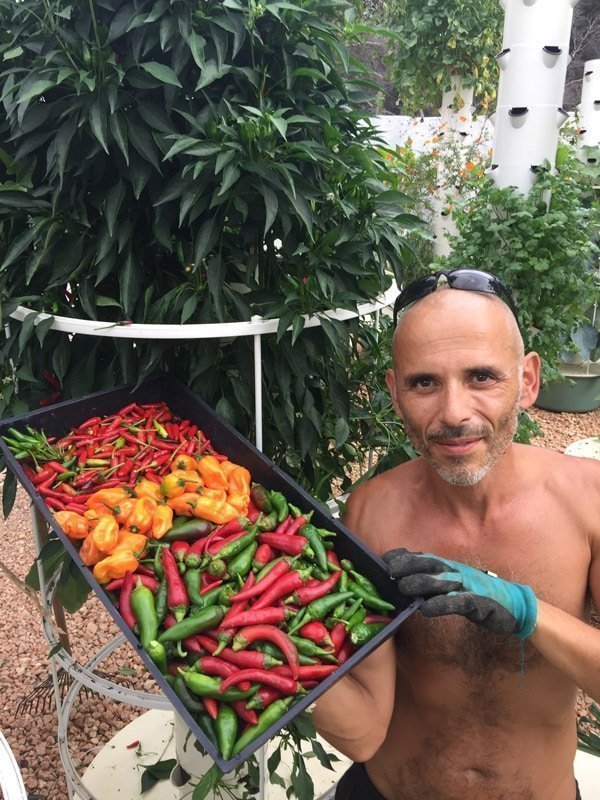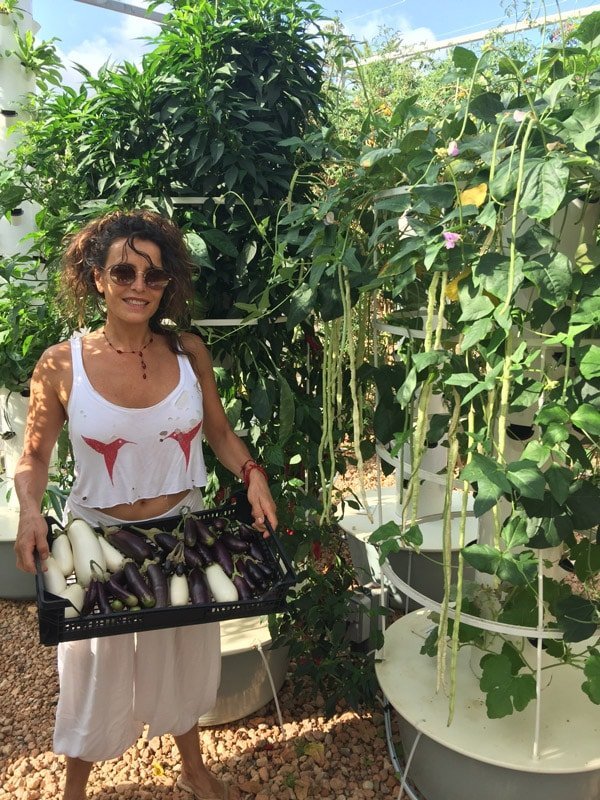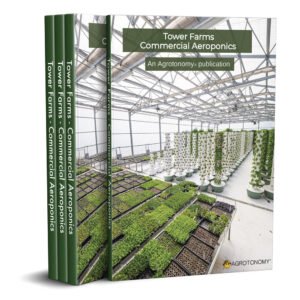However, in conventional hydroponics, the roots of the plants grow in a substrate and are immersed at all times in a constant flow of water enhanced with insufflated oxygen + soluble fertilizers.
With aeroponics, the roots of the plants just hang in the air and are fed intermittently. Due to the fact that the roots have 100% oxygen availability, the delivery of nutrients to the plant is unparalleled. The feeding cycles do not exceed a cumulated total of 15 minutes per hour. The roots are therefore just dangling in the air at least 45 minutes per hour. That’s right! The roots are simply hanging in the air at least 75% of the time thriving in a very highly oxygenated environment without substrate, without water, without soil…this is what defines aeroponics!
Contrary to general perception, what defines aeroponics is not how the roots are being fed. In fact, many “hydroponic/aeroponic aficionados” are under the impression that with a “true aeroponic system”, the nutrient solution must be administrated to the roots by means of high pressure mist system, or even better, atomized, like with fogponic technology.
A HPA (High Pressure Aeroponics) system has the ability to produce droplets which are 50 µm or less in diameter. Think about it this way, the diameter of a human hair is 80 µm on average! Droplets which are 50 µm are the perfect size for optimum delivery and intake to the roots.
An LPA (Low Pressure Aeroponics) system produces regular size droplets.
However, whether HPA or LPA, the end results in terms of crop yield and nutrient density are the same. Aeroponics is not about low-pressure/high-pressure and the micron size of the droplets, it is about having the roots just hanging in the air without feeding cycles at least 45 minutes out of the hour. Aero stands for Air and this applies for HPA and LPA systems.
However, it is proven that due to the size of the droplets when 50 µm or less in diameter, an HPA system requires less water and less nutrients than an LPA system. In fact, 50 µm in diameter is the optimum size for root absorption and this is why less is required to produce the same results.
Scientific comparative tests have proven that crops grown on Tower Garden aeroponic systems feature a superior nutrient density and show an increase in antioxidant and phenolic values. Furthermore, aeroponics delivers on average 35% increase in crop yield and 40% water savings in comparison to conventional hydroponics.
In a commercial Tower Farm, the feeding cycles are programmed to be on for 3 minutes, and off for 12 minutes, 24 hours per day. In other terms, the system is only on 12 minutes per hour (4×3 minutes). The plants’ roots are just hanging in the air without water nor nutrients for 48 minutes per hour!
Whether speaking about the residential model of the Tower Garden, or whether referring to Tower Garden technology used in a commercial Tower Farm, these towers are truly aeroponic towers!
Now, someone could argue that a Tower Garden is also a hydroponic tower… Oh well, we will not start a discussion on hydroponics versus aeroponics… We will not debate on the subject of alleged “true aeroponics” being misconceived by the notion of HPA versus LPA: the quality of crops, whether grown on a HPA or a LPA system are the same and far superior to regular conventional hydroponics.
Tower Garden has been manufacturing hundreds of thousands of aeroponic towers for over one decade. Tower Garden technology was the first aeroponic tower on the market (back then named Future Growing). Tower Garden is the pioneer of aeroponic tower technology and commercial Tower Farm systems.






